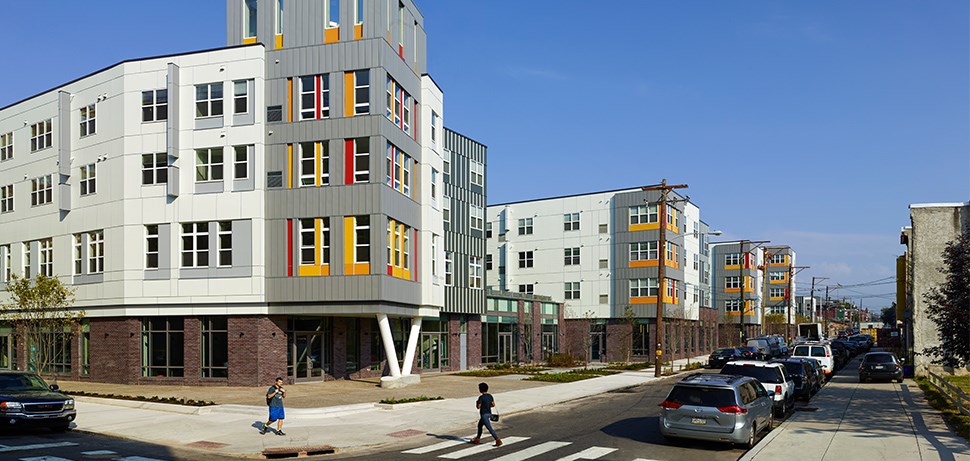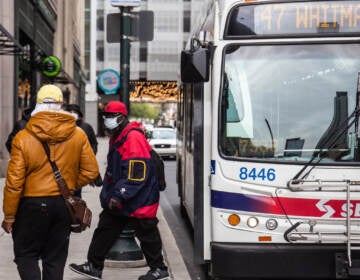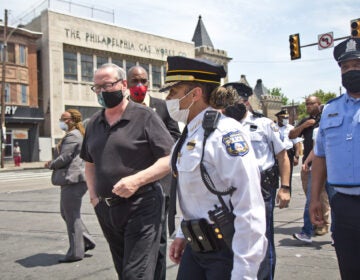Homegrown Middle Class: A Neighborhoods Policy for Philadelphia

To John Kromer the city’s persistent poverty is best tackled at the neighborhood level. In a four-part series of commentaries Kromer, an urban housing and development consultant and former city housing director, will explore different policy interventions the next administration can deploy to reduce poverty, stabilize neighborhoods, and finance anti-blight work. Kromer lays the foundation with this first installment:
Mayoral and City Council candidates rarely have to take strong positions on neighborhood issues because other topics, such as taxes, crime, schools, and drugs, are more likely to attract voter interest when presented in a citywide, rather than neighborhood-specific context. Given all the demands of a hectic campaign season, most candidates don’t bother to bring forward substantive proposals for improving the condition of Philadelphia neighborhoods until after the elections.
The lower-priority status of neighborhoods as a campaign issue is particularly unfortunate, because the city’s biggest problem—the persistently high level of poverty in Philadelphia—can only be solved at the neighborhood level.
Organizing a neighborhoods policy that can be effective in reducing poverty levels is doable but complicated. Doing so requires thinking about existing strengths and weaknesses and future opportunities in a new way and seeking to obtain political buy-in for a new approach immediately. Advocates for fundamental policy changes can’t afford to wait until after the inauguration ceremony, after the appointment of planning and development officials, and after the presentation of the new administration’s first budget. Anyone who’s serious about planning to significantly reduce poverty during the next city administration needs to begin now.
As a starting point, consider the following observations.
Affordable housing is a critical element of a neighborhoods policy—but it’s not the main event.
We can solve all of the biggest problems affecting Philadelphia neighborhoods—including unemployment, crime, and housing affordability—by focusing on just one priority: providing opportunities for people who are currently living in poverty to move up into the middle class. If we’re successful in making this priority the foundation for neighborhood policymaking and program development during the next four years, then conditions in economically disinvested communities will begin improving and the need for taxpayer-funded assistance programs will start declining.
Viewed in this context, affordable housing, although critically important, is secondary to education, skills development, and training that enables neighborhood jobseekers to compete successfully for employment in the mainstream economy. It’s one thing to acknowledge that investments in affordable housing, along with investments in child care, health care, and transportation, are important, as the Nutter Administration has done; but it’s another thing altogether to structure these investments as integral parts of an ambitious strategy to grow a middle class in the city’s distressed neighborhoods.
Despite the absence of an overriding top priority, the outstanding results achieved by some existing city housing programs should not be overlooked.
The city’s current housing programs are not all directly linked to a single top priority and a related organizing framework. However, these programs are, for the most part, capably managed, well executed, and responsive to current problems—characteristics that should not be overlooked in planning for the future.
City-supported initiatives to reduce street homelessness and provide quality housing and supportive services for formerly homeless people have been recognized as national models. Philadelphia’s network of city-supported housing counseling agencies has played a key role in ensuring the success of the mortgage foreclosure diversion program instituted by Judge Annette Rizzo. Few community development corporations in other cities have produced development ventures that are comparable to the mixed-income, “green community” Paseo Verde apartments developed by the Asociación Puertorriqueños en Marcha (Association of Puerto Ricans on the March, or APM) with substantial city support. The well-organized Philadelphia Land Bank Strategic Plan will have lasting value as a framework for intelligent decision-making about vacant property disposition.
So trashing the existing city housing agencies isn’t the right approach. Neither is endorsing the idea of reorganizing the housing agencies simply to achieve increased efficiency and cost effectiveness. Decisions about the organization, management, and staffing of city housing agencies and about the content of city-funded programs need to be linked directly to the overriding priority of growing new middle-income residents in Philadelphia neighborhoods.
The homeownership strategy that’s preferred by large numbers of neighborhood residents–upgrading existing occupied homes—is also the most difficult one to implement on a large scale.
Many homeowners who live in neighborhoods that are “changing”–either for better or worse–don’t want to move from their homes into newly developed housing. They’d rather have the homes they live in now made safe and habitable for the long term.
It’s no secret that upgrading existing occupied housing is an effective vacancy-prevention strategy and that housing preservation can cost much less than building new housing or rehabilitating long-vacant buildings. That’s why the city’s existing home repair and weatherization programs enjoy widespread public support and why the city is already committing $9.3 million of this year’s $48.6 million Community Development Block Grant budget to finance housing preservation activities.
The problems associated with this approach are also well known. Even at $9.3 million, the program is underfunded—the Basic Systems Repair Program waiting list is years long, and the prospects for obtaining additional funding from as-yet untapped sources are dim. Because contractors and homeowners—particularly elderly homeowners who may not have previously lived through a home-renovation experience–can find it difficult to establish working relationships and agree on the details of a work plan, completing a basic home repair job can consume a lot of time. And because repair jobs are processed individually rather than in bulk, there are few opportunities to take advantage of economies of scale.
In an upcoming commentary, I’ll be describing a proposal for a home-improvement financing program that could overcome these challenges and operate successfully on a citywide scale.
Leveraging opportunities associated with a stronger housing market are not being pursued.
During the past seven years, funding from two major federal sources, the CDBG and HOME programs, has declined from $85.8 million in Fiscal 2008 to $57.6 in the current fiscal year. Within the past decade, however, house price appreciation rates have increased significantly in every section of Philadelphia. As documented in economist Kevin Gillen’s January 2015 report on Philadelphia house price indices, house prices appreciated by 30.4 percent in North Philadelphia and by 25.7 percent in Kensington/Frankford, two sections of the city to which substantial amounts of CDBG and HOME funding are allocated every year. However, opportunities to leverage the value associated with a rising housing market have not been recognized by the city administration. The structure of the city’s Consolidated Plan for Fiscal 2015 is, in many respects, identical to that of the Consolidated Plan for Fiscal 2008. The right leveraging strategy could strengthen the city’s affordable housing approach and offset continued reductions in federal funding; but this strategy is still waiting to be designed and implemented.
Some of the best-known strategies advanced by neighborhood advocates aren’t workable. Eliminating or reducing the scope of the city’s ten-year tax abatement program would be counterproductive, as a 2014 report by Gillen and developer John Westrum has shown, and tailoring the abatement to targeted neighborhoods wouldn’t be possible without an amendment to the state Constitution’s Tax Uniformity Clause. The Philadelphia market isn’t strong enough to support large-scale inclusionary housing mandates, and no one has yet produced a business plan for a cost-effective community land trust.
Philadelphia has a new friend in Harrisburg; and Philadelphia’s friend in the White House is receptive to game-changing proposals.
During the coming months, it’s unlikely that major infusions of funding from Harrisburg and Washington will become available to support a new neighborhoods policy. However, in the current political climate, there are significant opportunities for an incoming Philadelphia Mayor to propose entering into an ambitious joint venture with Governor Wolf and President Obama to fundamentally improve conditions in Philadelphia neighborhoods and to create a national model by doing so. It wouldn’t be hard for an incoming Philadelphia Mayor to get a meeting with the Governor and President. But, once the three of them got together, what game-changing proposal would the Mayor present?
During the Clinton Administration, then-HUD Secretary Henry Cisneros came to Philadelphia and challenged Mayor Rendell and Council President Street to take over the leadership of the Philadelphia Housing Authority in exchange for special commitments of federal resources to support a public housing reform plan. By the end of that decade, some of the city’s most deteriorated public-housing high-rises had been demolished, and plans to replace them with well-designed mixed-income housing were well under way. That initiative helped stimulate major increases in property values and major gains in public safety in neighborhoods such as East and West Poplar, Hawthorne, and Pennsport. It’s an example of how a challenge to the status quo, delivered at the top levels of government, can produce order-of-magnitude improvements in neighborhood marketability and quality of life.
So what game-changing proposal should Philadelphia’s next Mayor (accompanied by the Council President) bring to Governor Wolf and President Obama? And what would a fundamentally different neighborhoods policy look like? In three future commentaries, I’ll be recommending opportunities to pursue a new approach.
WHYY is your source for fact-based, in-depth journalism and information. As a nonprofit organization, we rely on financial support from readers like you. Please give today.






